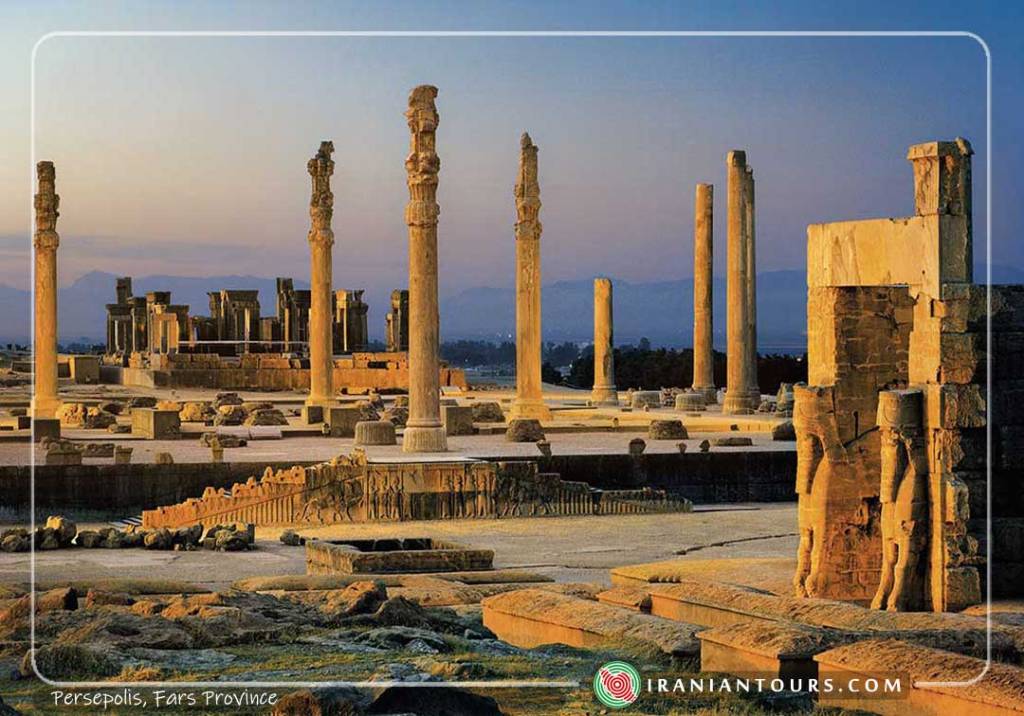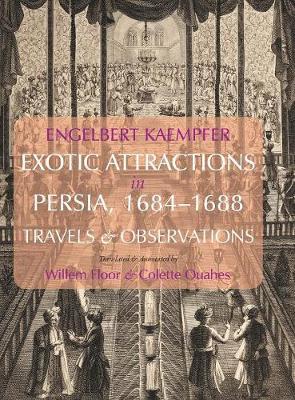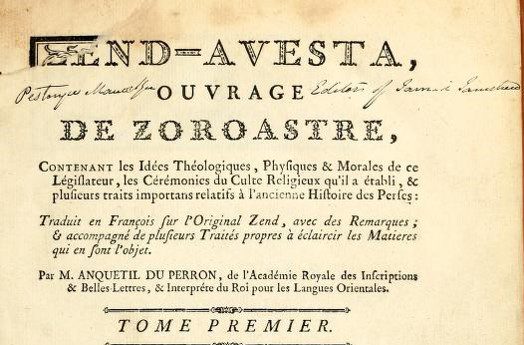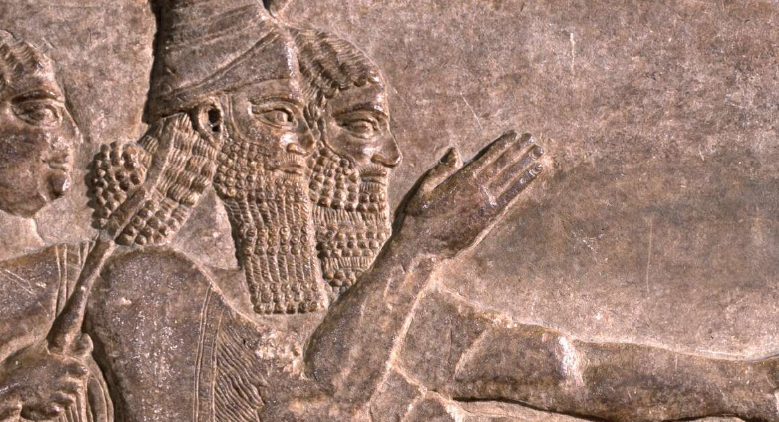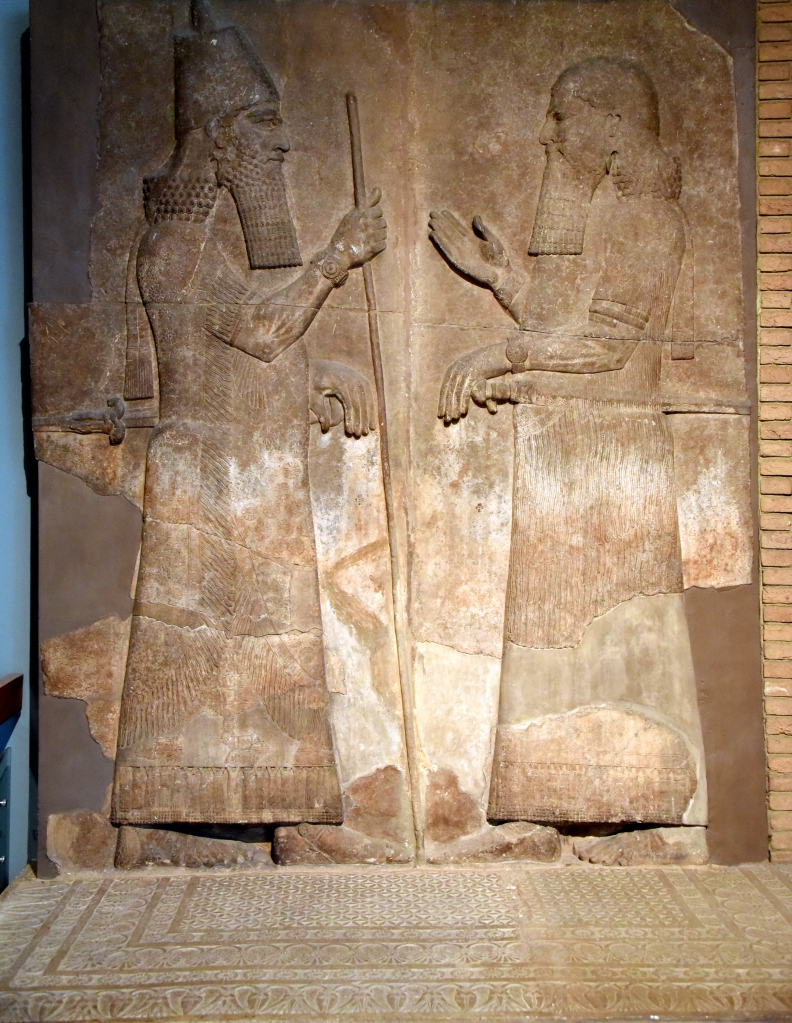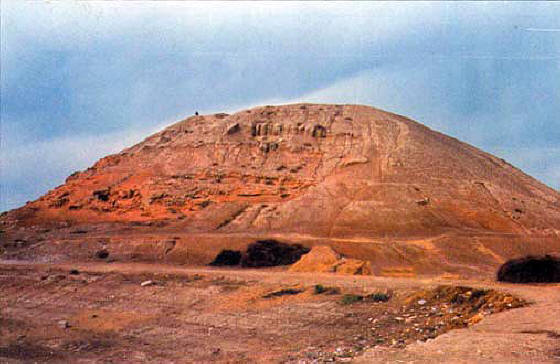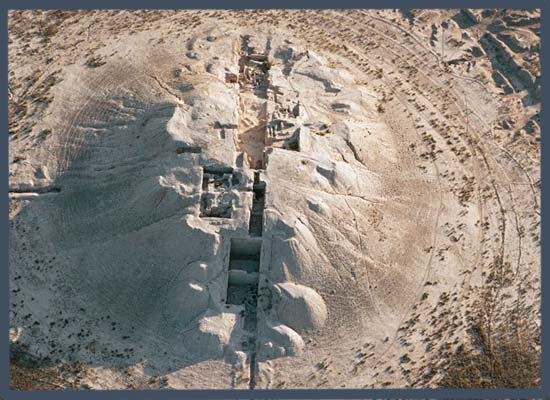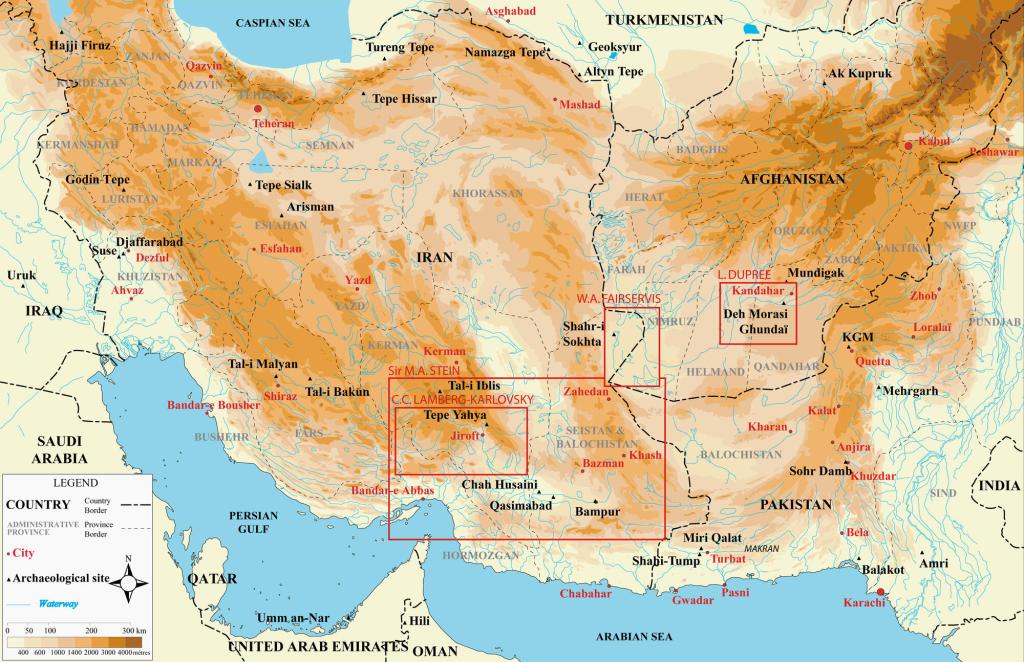Pre-publication of chapter XXVII of my forthcoming book “Turkey is Iran and Iran is Turkey – 2500 Years of indivisible Turanian – Iranian Civilization distorted and estranged by Anglo-French Orientalists”; chapters XXVII, XXVIII, XXIX, XXX, XXXI and XXXII form Part Eleven (How and why the Ottomans, the Safavids and the Mughals failed) of the book, which is made of 12 parts and 33 chapters.
Until now, 16 chapters have been uploaded as partly pre-publication of the book; the present chapter is therefore the 17th (out of 33). At the end of the present pre-publication, the entire Table of Contents is made available. Pre-published chapters are marked in blue color, and the present chapter is highlighted in gray color.
In addition, a list of all the already pre-published chapters (with the related links) is made available at the very end, after the Table of Contents.
The book is written for the general readership with the intention to briefly highlight numerous distortions made by the racist, colonial academics of Western Europe and North America only with the help of absurd conceptualization and preposterous contextualization.
———————–
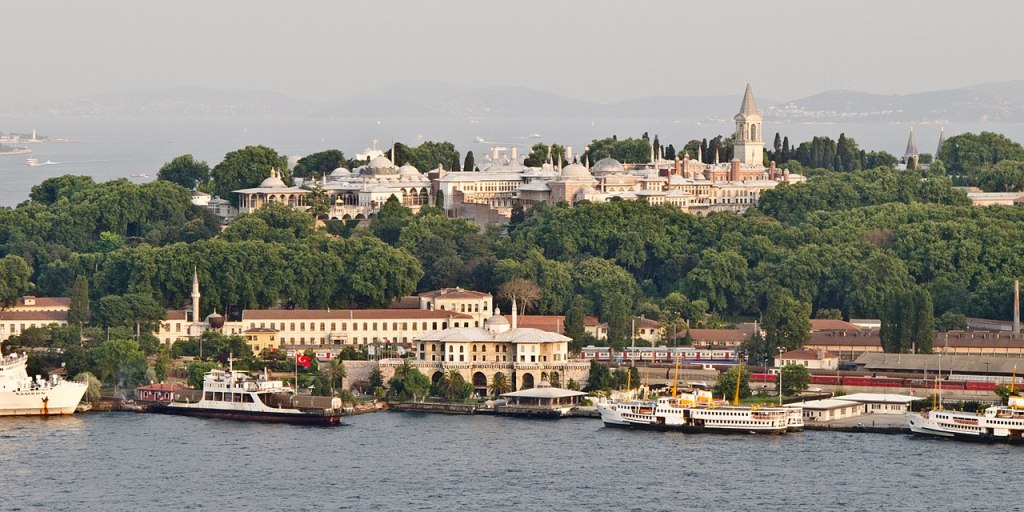
Topkapı Palace, Ottoman Constantinople
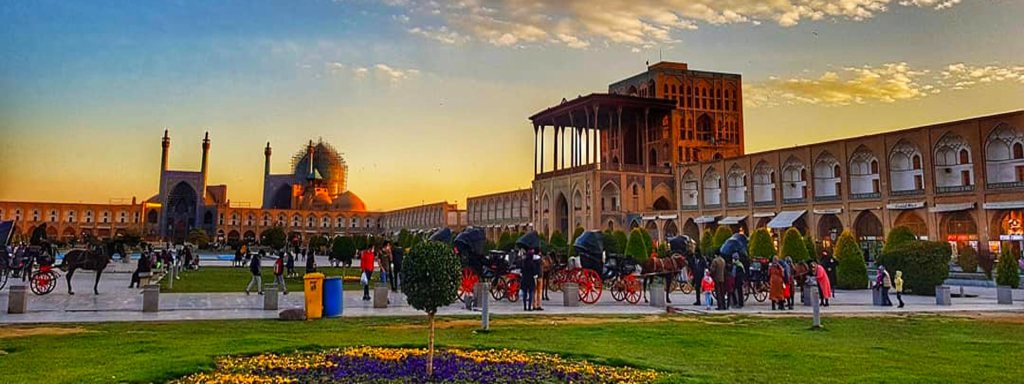
Ali Qapu Palace, Safavid Isfahan
Western historiography enters a stage of exorbitant falsification when attempting to reconstitute the History of the Safavid dynasty of Iran (1501-1736). What stands at the forefront of the Western forgery and distortion of the History of Iran during the said period is the theory that the Safavid dynasty was ‘Shia’, and also that they ‘converted’ the Turanian population of 16th c. Iran to ‘Shia Islam’. Of course, such fictional conversion never took place, and the Safavid rulers would reject the fake division of Islam into two denominations, since they always proclaimed their Islamic authenticity and integrity, fully refuting the concept of a ‘divided Islam’.
However, this fake division is instrumental for the colonial distortion of History, because on this fallacy hinges the entire Western involvement in the Orient and the conflicts that the criminal and evil states of England, France and America generated across Afro-Eurasia. In order to fully and irreversibly embed the vicious divisive scheme of a supposedly bi-polar Islamic world revolving around two rival empires, namely the ‘Sunni’ Ottomans and the ‘Shia’ Safavids, the Western Orientalists, agents, explorers, diplomats, and statesmen invented the fallacy of the so-called “Safavid conversion of Iran to Shia Islam”.
Of course, at the time (: early 16th c.), the Western colonial powers did not have the chance to impose their false version of History on the Ottomans and the Safavids; they even had not developed Oriental studies properly speaking in their already established pernicious universities. At the time, History was in the making. The only thing that the colonial empires could do, and which they viciously did, was to frame the divisive plot and to pull their diplomatic strings in order to trigger as many Ottoman – Safavid wars as they could. The distortive interpretation and the evil misrepresentation of these facts would come later – in due course of time.
And the malignant fallacy ‘happened’ truly when it ‘should’ have; when the collapsing Ottoman and Iranian empires were eroded through colonial infiltration and evil subversion, then the colonial gangsters and the 19th c. Orientalists started carrying out the projection of the already preconceived forgery onto the Western powers’ local stooges, who by means of shameful bribery and high treason (termed as ‘scholarships for studies in Western Europe’) started diffusing pathetic nonsense and bogus-academic lies in their respective countries only to fit the needs of their masters, namely the colonial powers. At the last stage, the monstrous and murderous forgery of France and England was presented as “History” worldwide only because their colonial empires subjugated almost the entire world and imposed the racist Anglo-French intellectual-academic contamination.
So, the historical forgery that the Western academic murderers have been teaching for over two centuries in their bogus-universities as “Oriental History” is merely the coverage of their inhuman deeds, which plunged Afro-Eurasia into ceaseless local and regional wars, countless rebellions, and two world wars. But the original concept behind the inhuman diplomacy of England and France was already there at the beginning of the 16th c., when they started fallaciously calling Iran, namely a totally Turanian country, “Persia”; this was preposterous. Soon afterwards, they started also naming the Ottoman Empire “Turkey”, which is another expression of their evilness and forgery, because the Ottoman Empire was in reality the most anti-Turkic state in World History.
No less than eight (8) times the Ottoman Empire and Safavid Iran came to war during the period of 235 years of Safavid rule over Iran. Actually, the wars started in 1514 and ended 1736 with the fall of the Safavids; of course, the historical fact of 8 wars does not mean in this case only 8 years consumed in wars! Most of these wars lasted many years. And actually, the Ottoman-Iranian wars did not end with the demise of the Safavid dynasty. Wars were resumed at the times of the Turanian Afsharid dynasty of Iran (1736-1796) and also during the period of the Turanian Qajar dynasty of Iran (1789-1925). So, from 1514 until 1823, in only 309 years, the Ottoman Empire and the Iranian Empire made eleven (11) wars one upon the other. In total, during 309 years, the two empires were engaged in wars against one another for no less than 81 years. About:
https://en.wikipedia.org/wiki/Ottoman%E2%80%93Persian_Wars
https://en.wikipedia.org/wiki/Afsharid_dynasty
https://en.wikipedia.org/wiki/Qajar_dynasty
https://en.wikipedia.org/wiki/History_of_the_Russo-Turkish_wars
https://en.wikipedia.org/wiki/Russo-Persian_Wars
If one takes also into consideration the fact that both empires made many other wars with numerous neighboring empires (such as the Mughal Empire, the lately risen Russian Empire, and the Holy Roman Empire of the German Nation) and several colonial kingdoms (Spain, Portugal, France, England, etc.), one concludes easily why the two empires gradually collapsed. Furthermore, taking into account first, the diplomatically instigated and deliberately machinated twelve (12) wars between the Ottomans and the Russian Empire, which took place during a period of 350 years (1568-1918) and lasted for no less than 57 years, and second, the five (5) wars between the Iranians and the Russians, which occurred over the span of 177 years (1651-1828) and kept going for 19 years, one can plainly assess the evilness of the divisive intrigues that the Western European colonial diplomats instigated across Afro-Eurasia, and the unprecedented bloodshed that they caused.
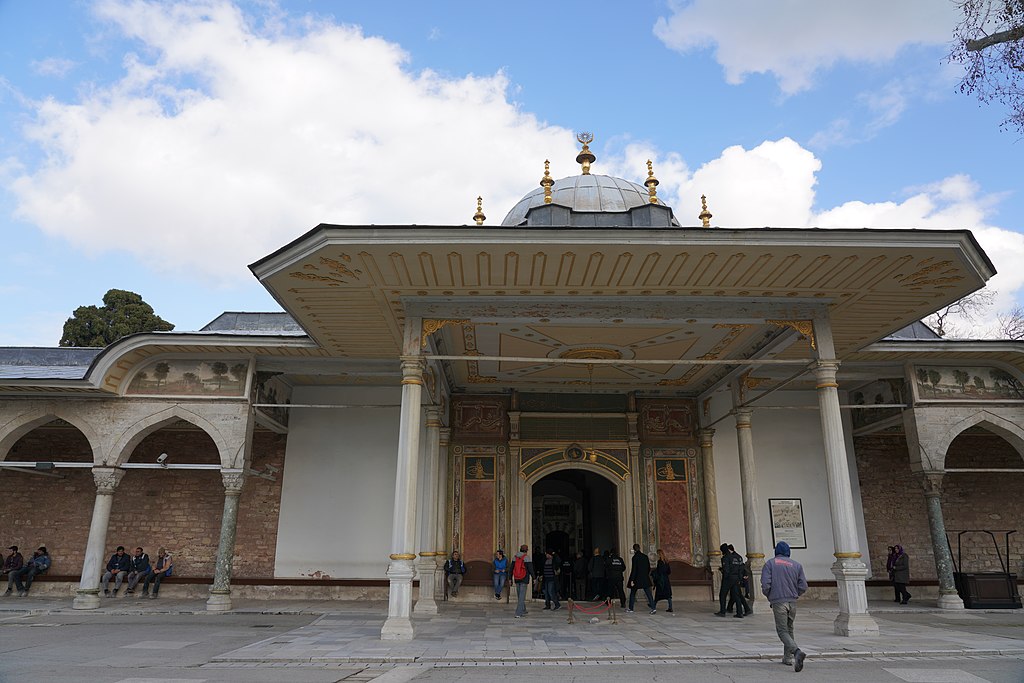
Gate of Felicity (Bâbüssaâde), Topkapı Palace, Ottoman Constantinople
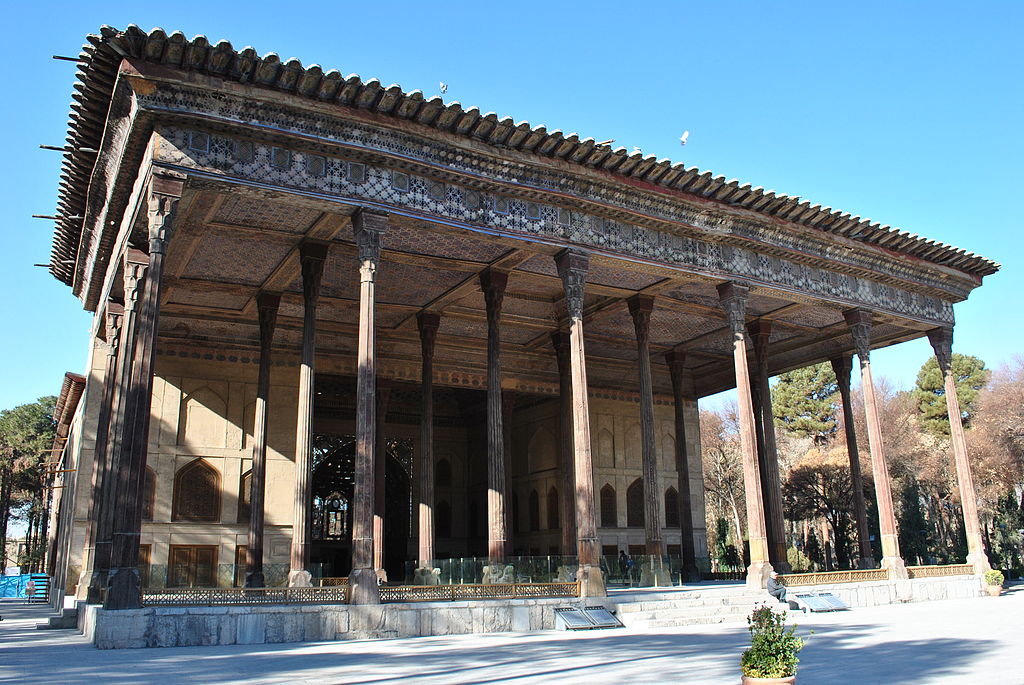
Chehel Sotoun Palace, Safavid Isfahan
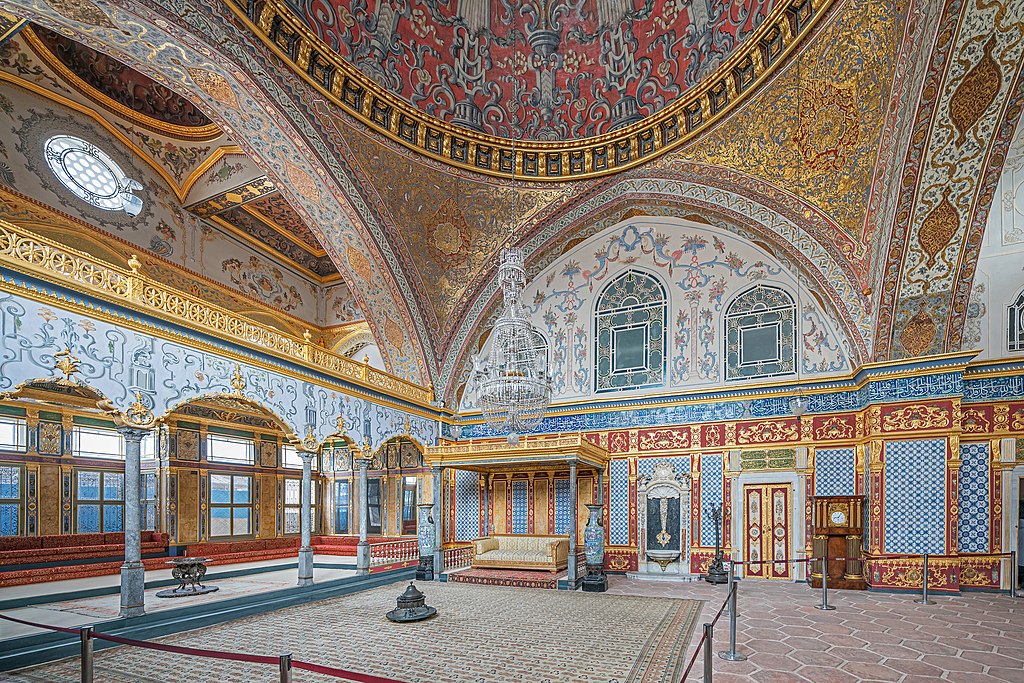
Imperial Hall with the throne of the sultan, Topkapı Palace, Ottoman Constantinople

Central Hall, Chehel Sotoun Palace, Safavid Isfahan
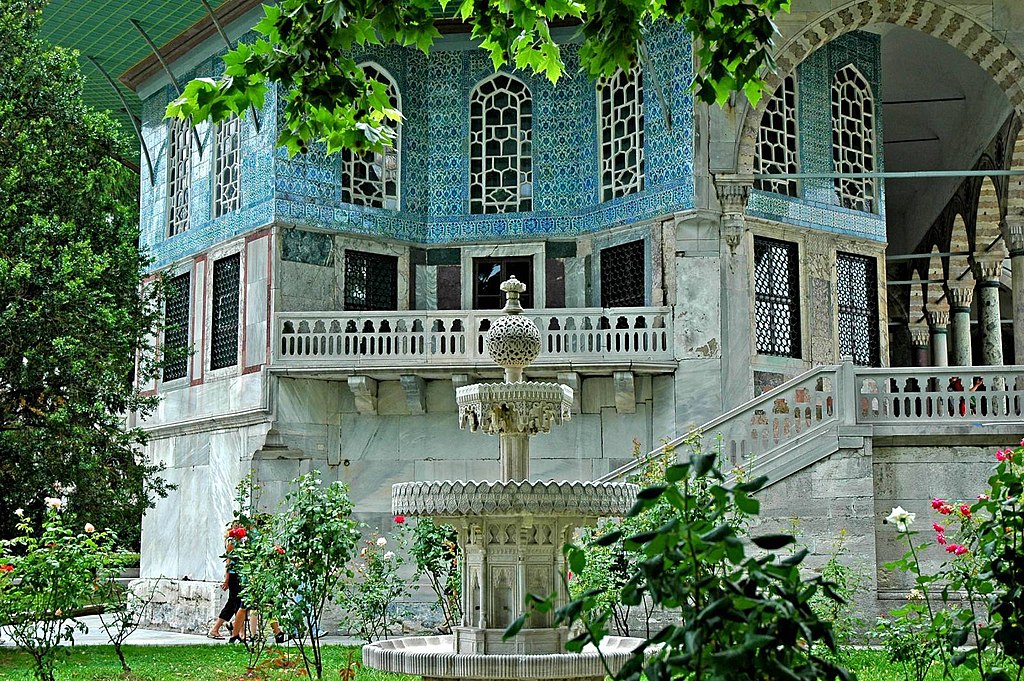
Open recess (iwan) of the Yerevan Kiosk, Topkapı Palace, Ottoman Constantinople

Chehel Sotoun Palace, Safavid Isfahan
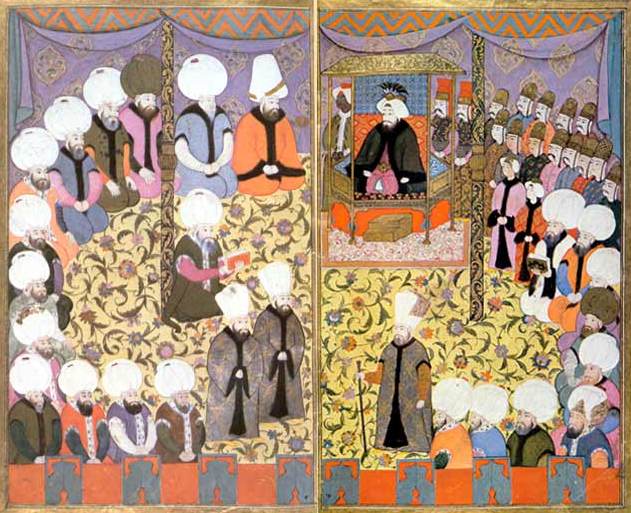
Scene from the Surname-ı Vehbi, located in the Topkapı palace, Ottoman Constantinople

Battle of Chaldiran (1514); Grand painting at the Chehel Sotoun Palace (despite the fact that the battle ended with Ottoman victory), Safavid Isfahan
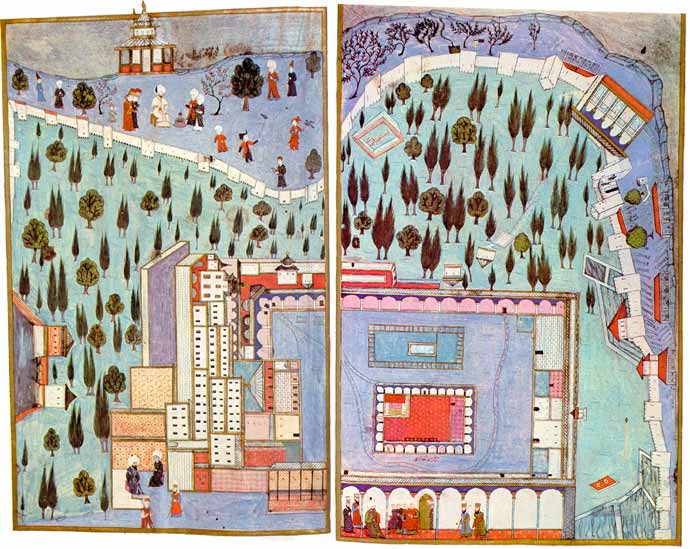
The Third Courtyard of the Topkapı Palace in the Ottoman Constantinople, as depicted in a miniature of the Hünername, 1584
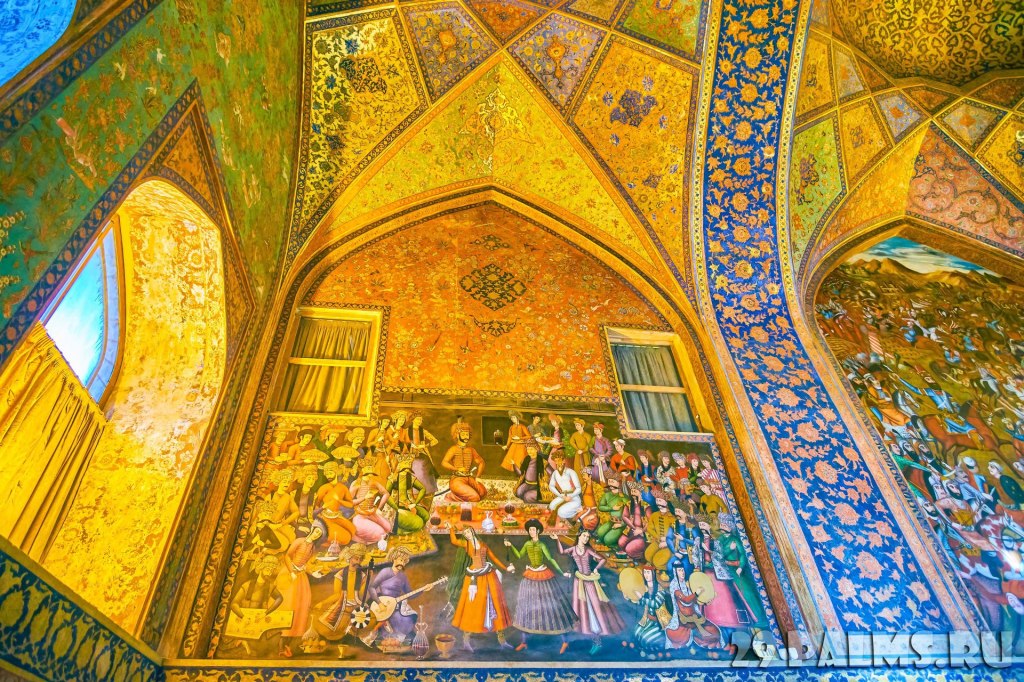
Chehel Sotoun Palace frescoes; Safavid Isfahan

Tiled room inside Harem, Topkapı palace, Ottoman Constantinople
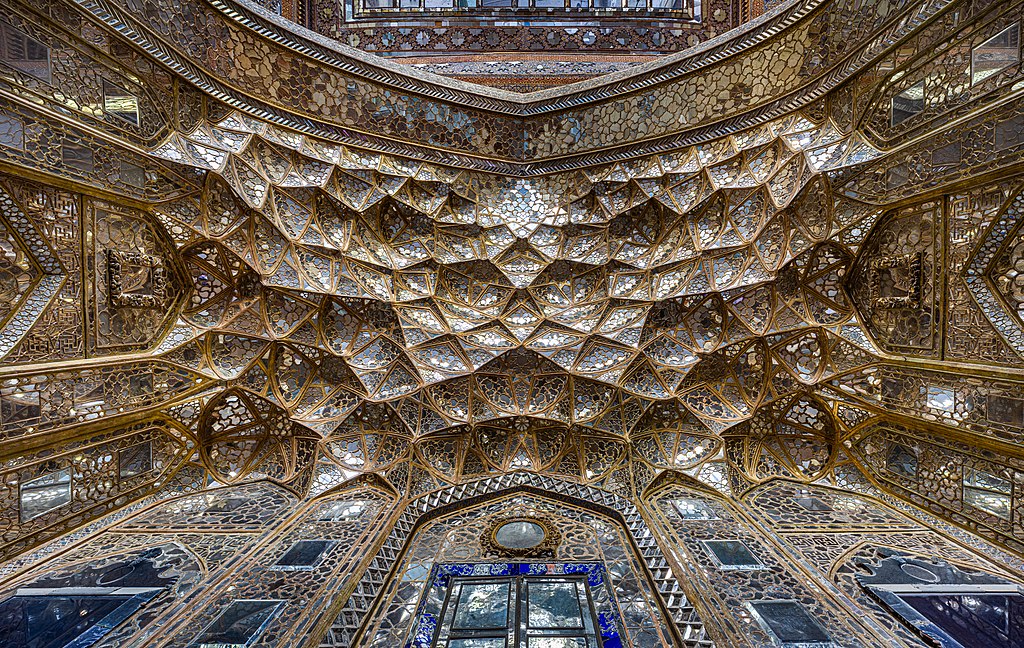
Muqarnas of Chehel Sotoun Palace, Safavid Isfahan
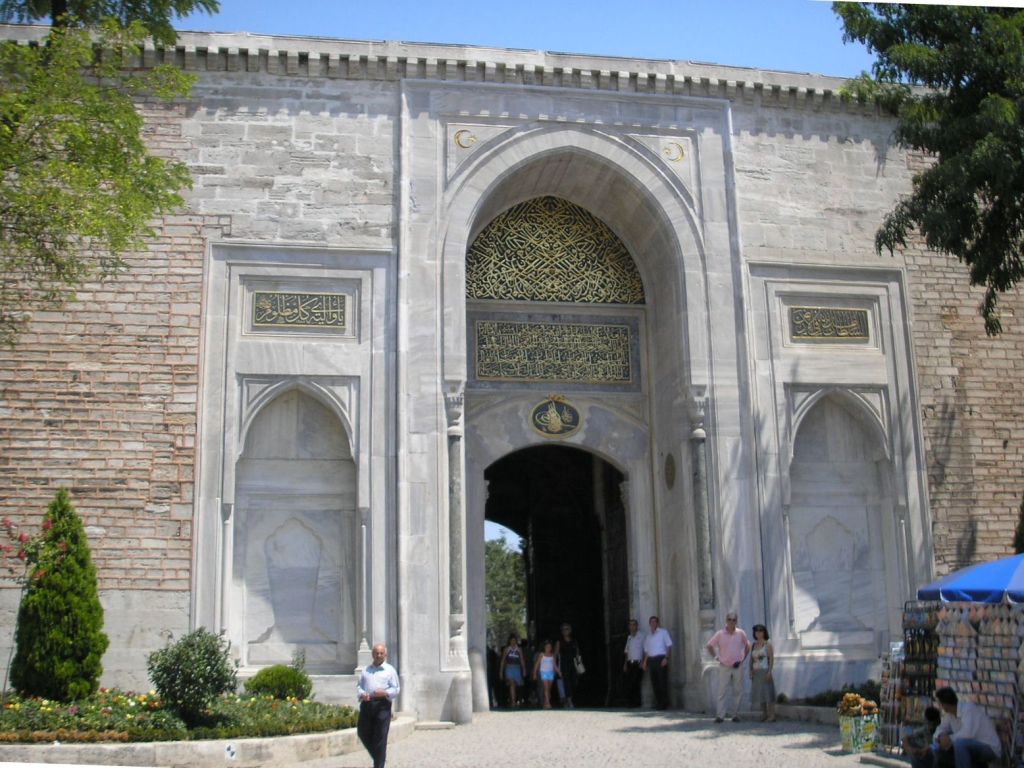
Imperial Gate (Bâb-ı Hümâyûn) Topkapi Palace, Ottoman Constantinople
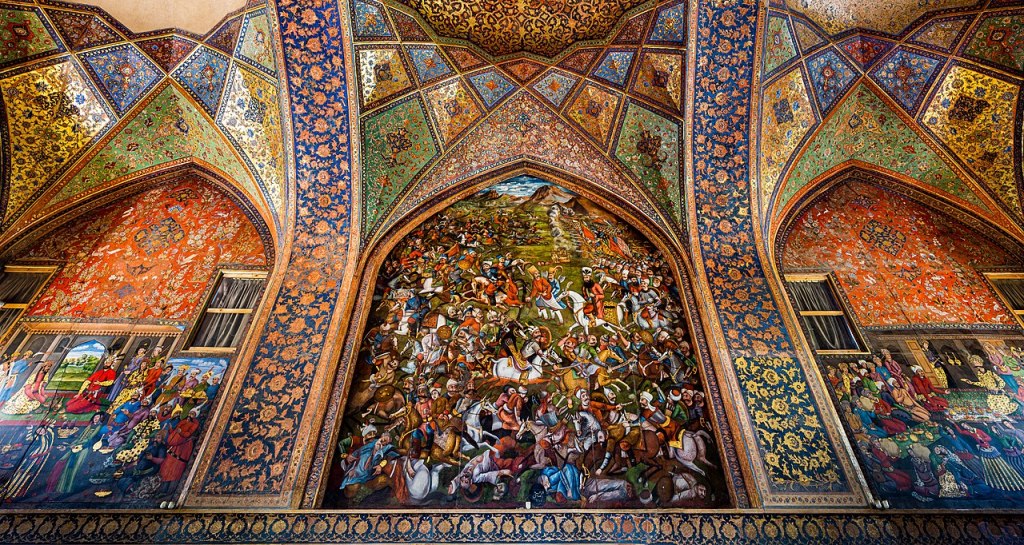
Paintings in the main hall of the Chehel Sotoun Palace, Safavid Isfahan
All the wars, which were machinated and instigated by the colonial English and French diplomacies, needed a sophisticated coverage, e.g. some fake reasons, which would ‘explain’ or ‘justify’ to anyone why these wars happened (or ‘had’ to happen). To be convincingly fake, these reasons were based on a total distortion of the identity of both empires, the Ottoman and the Safavid; these distorted identities, which ‘explained’ the Ottoman – Safavid wars to the average public opinion in Europe at the time, became later the vertebral column of the fallacious Western Orientalism and its entirely fake branches, namely Turkology and Iranology.
To describe the extent and the depth of the Western Orientalist fallacy, suffice it that I herewith state the following: a major topic for Turkologists to study should become the Safavid Empire of Iran as a Turanian state, because it was ethnically a Turanian Empire whereby the outright majority of the population used to speak diverse Turkic languages as their native tongues.
Similarly, a major topic for Iranologists to study should become the Ottoman Empire, because an overwhelmingly Iranian culture permeated the state to such extent that, when Mehmet II entered Constantinople on 29th May 1453 and proceeded to the Palace of the Eastern Roman Emperors, the first words that he uttered were neither in Ottoman Turkish nor in Medieval Greek nor in Arabic, but in the classical, literary language of all Turanians, i.e. in Farsi.
The spider is curtain-bearer in the palace of Chosroes;
the owl sounds the relief in the castle of Afrasiyab.
These verses written c. 180 years before the conquest of Constantinople (1453) by the great Iranian poet Saadi (known as Saadi Shirazi, 1210-1291) reveal
– the absolutely identical nature of the Turanians and the Iranians,
– the common cultural background of all Iranian and Turanian nations,
– key elements of the Iranian-Turanian apocalyptic and soteriological eschatology,
– the last moments of the ailing Iranian rule (Chosroes: the last major Sassanid emperor Khusraw Parvez; 570-628), and
– the Turanian revival of Iran (Afrasiyab).
(Tarih-i Ebu’l Fatih, Istanbul, 1330, p. 57)
https://en.wikipedia.org/wiki/Saadi_Shirazi
Mehmed II, by uttering these verses, clearly indicated that he viewed his victory in terms of Iranian-Turanian culture and eschatology, before all the other eventual or hypothetical parameters involved in the topic (Palaeologi-Ottoman imperial family rivalry; Christian-Muslim religious conflict; Eastern Roman-Turkic ethnic quarrel; economic interests).
In fact, there should have never existed Turkology and Iranology within the context of Western Orientalism, if this unit of academic disciplines were to serve the true purpose of exploration and search for the historical truth. The reason is simple: Turan and Iran have always been an indivisible historical – cultural entity.
However, the false portrait of the Ottoman and the Safavid empires, which had been systematically produced by the 16th c. colonial powers, involved two dimensions of distortion of the reality, namely religious and ethnic. Then, 19th and 20th c. French and English academics and explorers misinterpreted the 16th c. Ottoman – Safavid wars that their countries’ duplicitous diplomats had instigated as of both, religious and ethnic, reasons; and in both cases, these scholars lied, pretty much like today’s Orientalists lie when presenting, teaching and propagating the following forgery: “Sunni Turkish Ottomans vs. Shia Persian Safavids”.
In fact, at the beginning of the 16th c., with the exception of Eastern Iranians (namely the Tajik / Dari speaking populations), there was not one Persian ethnic alive; Iran had already been almost entirely Turanized at the ethnic-linguistic level. Farsi was a highly respected and widely used language of Literature, History, Spirituality, Art, Architecture and Culture that all the educated people felt obliged to learn in young age at the various madrasas of the cities, the towns and the villages of Iran. But in reality, Farsi was at the time a dead language like Latin in 16th c. Germany.
Only later and mainly during the 20th c., following the aggressive and extensive English involvement and the shameful colonial rule of Iran, which was carried out by local puppets, a ‘new’, systematized ‘modern education’ was imposed on all Iranians, the true, traditional Iranian History (based on Ferdowsi, Nezami Ganjavi and many other illustrious epic poets) was forcefully and calamitously replaced by the fake, materialistic, atheistic and evil Iranian ‘History’ of the Orientalists, and Farsi became obligatorily the meaningless ‘national’ language. These tasks have been completed by the pathetically ignorant, uneducated and charlatanesque soldiers, who were later called “Pahlavi dynasty shahs”.
The Universal Empire of Iran disappeared, and a fake, nationalistic, ‘Persian’ pseudo-kingdom was established only to implement the ensuing culturally anti-Iranian and ethnically anti-Turanian, nationalist tyranny. It was a villainous Freemasonic plot and eschatological conspiracy against Iran, involving many ulcerous English, French, American and other enemies of Imperial Iran, who postured as ‘friends’ of ‘Persia’ or ‘admirers’ of the ‘Persian civilization’. They only wanted to fool the Iranians and to insult Iran diachronically, after the absurd and abominable example given by ancient rascals like Herodotus and Aeschylus.
While the rocambolesque and even wacky Pahlavi pseudo-dynasty was in power, the criminal English colonials prepared their substitute, namely several pseudo-theologians, who composed pathetic theoretical systems, triggered absurd religious fanaticism, and engulfed the entire Iranian nation in colonial dilemmas and utmost confusion of political nature. Farsi, as the language of the systematized Western education, was indeed revivified particularly among the incessantly increasing urban populations, who started forgetting their native tongues, notably Azeri, Turkmen and other.
During the time of the Pahlavi bogus-Iranian ‘shahs’ (1925-1979), a ‘white’, nationalist terror was imposed on the misfortunate nation; the use of other languages was strictly prohibited. However, this linguistic revival is a fake, and it looks like an awakening of the mummy. The people, who speak Farsi as a native language in today’s Iran, are of Turanian ethnic origin in their outright majority; even worse, their culture is entirely Turanian–Iranian, and their most celebrated rulers and beloved emperors are all Turanians, like Shah Isma’il I, the founder of the Safavid dynasty.
This does not mean that there are not several genuine Iranian languages spoken today in Iran by native speakers; of course, there are many: they speak Baluch, Lori, Bakhtiari, Gorani, Faili, Kalhori, Gilani, Laki, Talysh, etc. But these ethno-linguistic groups represent rather small minorities in Iran. These populations are certainly of Iranian ethnic origin, but they share the common Iranian-Turanian culture with all the populations of Turanian ethnic origin in Iran and in many other countries.
The present situation in Iran looks strange and absurd to all the local victims of the diffusion of Western propaganda of educational-academic-intellectual character; in fact, the systematic propagation of the erroneous Western notion of ‘nation’ or ‘ethnic group’ triggered only troubles and conflicts. This noxious development relates to the inhuman intellectual perversion that is called ‘Enlightenment’ in the Western world. This consists in intellectual darkness and educational paranoia that caused numerous wars over the past 250 years.
For millennia, various ethnic groups -Iranian and Turanian- speaking different languages, shared always their common culture and tradition without feeling or caring about the unsubstantiated and otherwise nonexistent, fake borders and the evil division lines that the 18th c. Western European concept of ‘nation’ produced worldwide. This historical reality of Turanian-Iranian indivisibility was irrevocable within the universal Iranian Empire, which was the supreme blessing of God and the best present that the divine world had bestowed upon Mankind.
Whatever fallacy the Western Orientalists may eventually invent and include in their often nonsensical bibliography falls apart in the light of all historical sources and texts. If the modern Western academia and intellectuals cannot understand the true reality, this is due to their degenerate minds, the advanced rottenness of their decomposed educational and social structures, and the nauseating putrefaction of their moral core.
Then, the fabrication of the fake divide “Turks vs. Persians” helped the criminal colonial powers spread divisions among the Turanians of Western, Central, Southern and Northern Asia, and the Caucasus region. The parallel creation of the fake divide “Sunni Muslims vs. Shia Muslims” was instrumental in plunging the entire Islamic world in permanent strife. Then, the combined fallacy “Sunni Turkish Ottomans vs. Shia Persian Safavids” is an explosive mixture geared to prolong and perpetuate the catastrophic division of all the populations living between the Bosporus and the Indus River Delta.
However, if they destroy the evil deeds of the local puppets of the Anglo-Saxon colonial governments, these populations could triumphantly unite in a secular super-state of ca. 450 million people and thus become the new superpower and Western Asia’s real locomotive of nations. Alternatively, if the existing colonial divisions are allowed to further exist, they can trigger new fratricidal wars among the Turks, who are culturally Iranian, and the Iranians, who are ethnically Turks.
For all the aforementioned national divisions and historical distortions to be duly presented and propagated worldwide by the Western historical forgers in a complete manner, a key point had to be invented: the supposed Safavid conversion of Iran to ‘Shia Islam’. This Orientalist fallacy hinges of the misrepresentation of the mystical Safavid Order, which founded an entire empire for themselves: the Turanian Empire of Safavid Iran.
However, the falsification of the identity and the deeds of the Safavid Order would never be successfully undertaken worldwide, if the entire Western world was not already totally confused about two totally different issues, which were systematically presented to the average people of all the Western countries as supposedly ‘one’ by their religious, academic and intellectual authorities alike: spirituality and religion.
Nevertheless, spirituality and religion are totally distinct activities of the spiritual and the material hypostases of the human being.
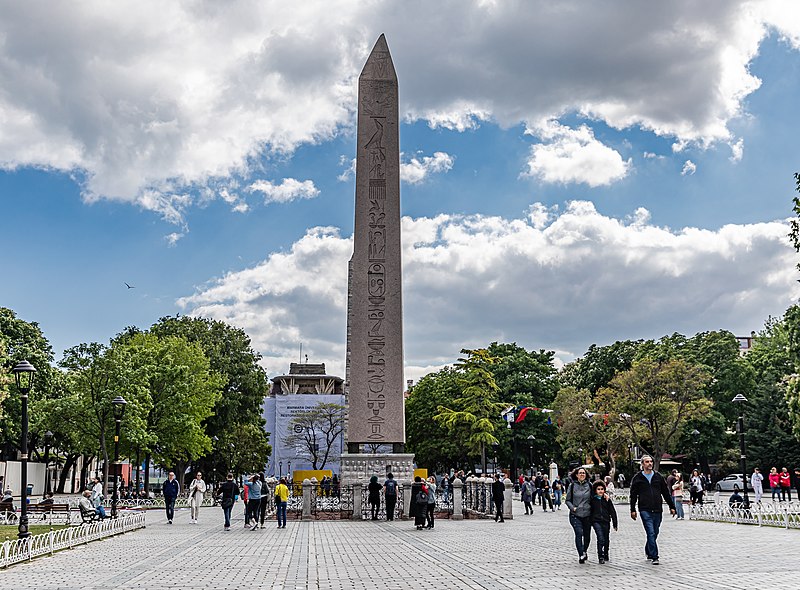
Sultanahmet Square in Ottoman Constantinople: the Eastern Roman hippodrome and Obelisk of Theodosius, which was transported from Luxor
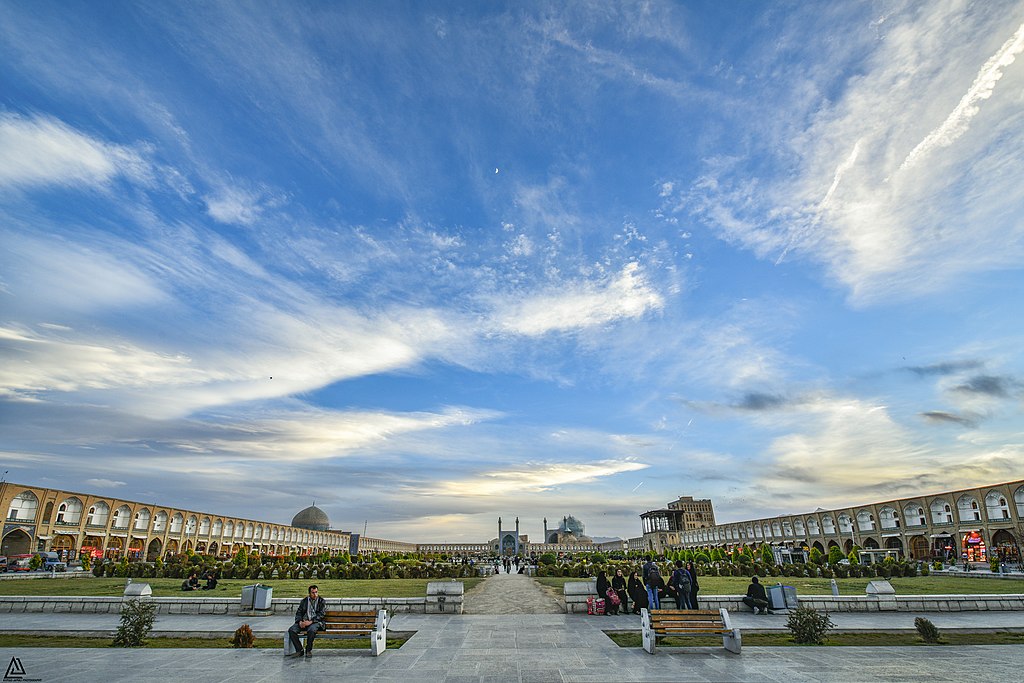
Naqsh-e Jahan Square in Safavid Isfahan
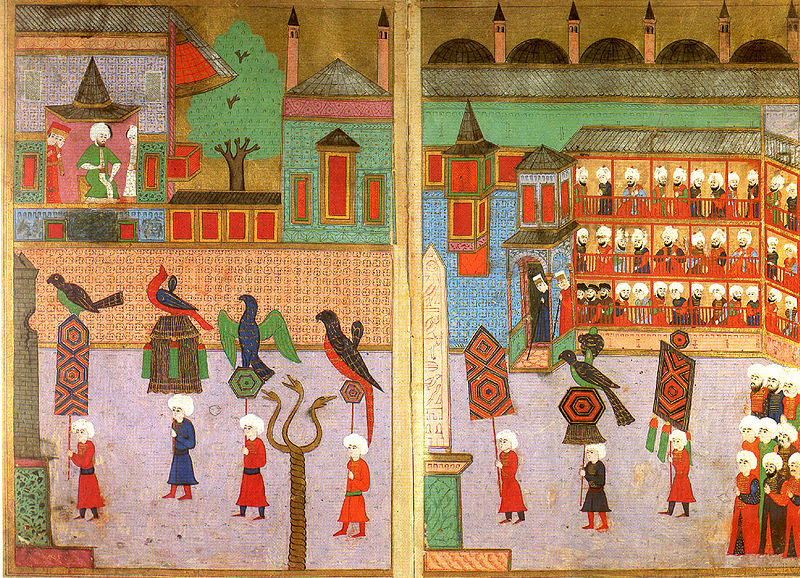
Procession of the guilds in the hippodrome as per a miniature of the Surname-i Vehbi (1582)

Naqsh-e Jahan, the imperial square in Safavid Isfahan
—————- BLUE MOSQUE, OTTOMAN CONSTANTINOPLE —————-
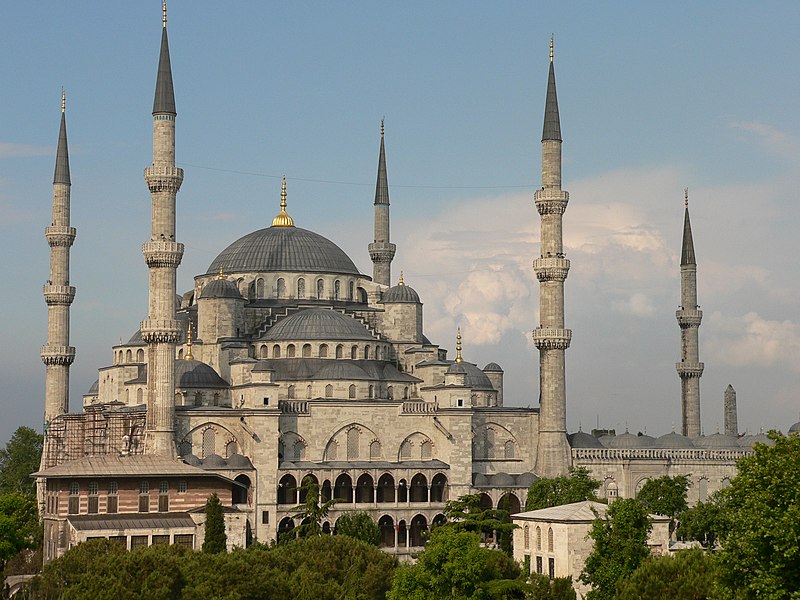
Blue mosque (Sultan Ahmet Camii): built between 1609 and 1617
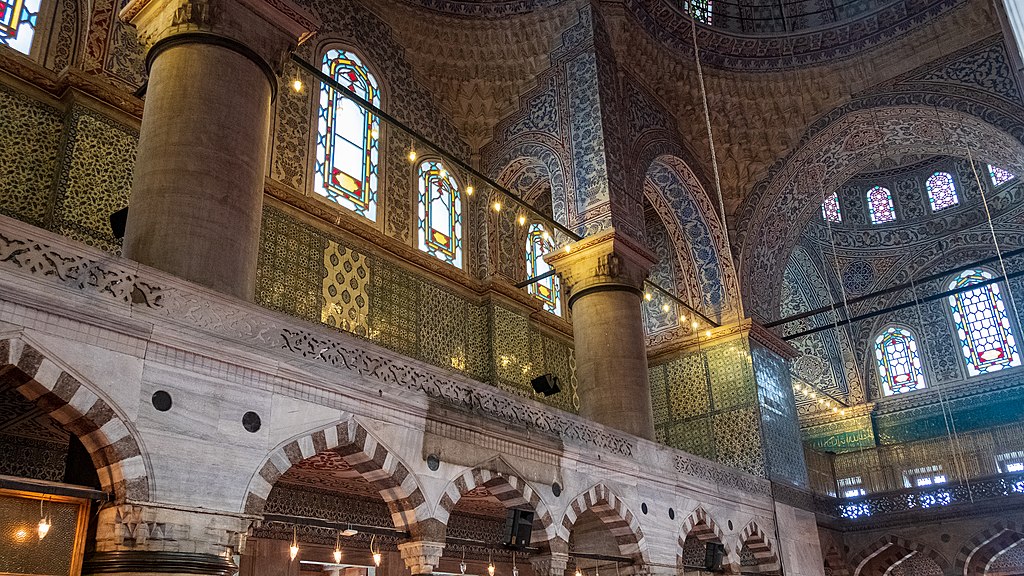
Blue mosque, part of the interior decoration
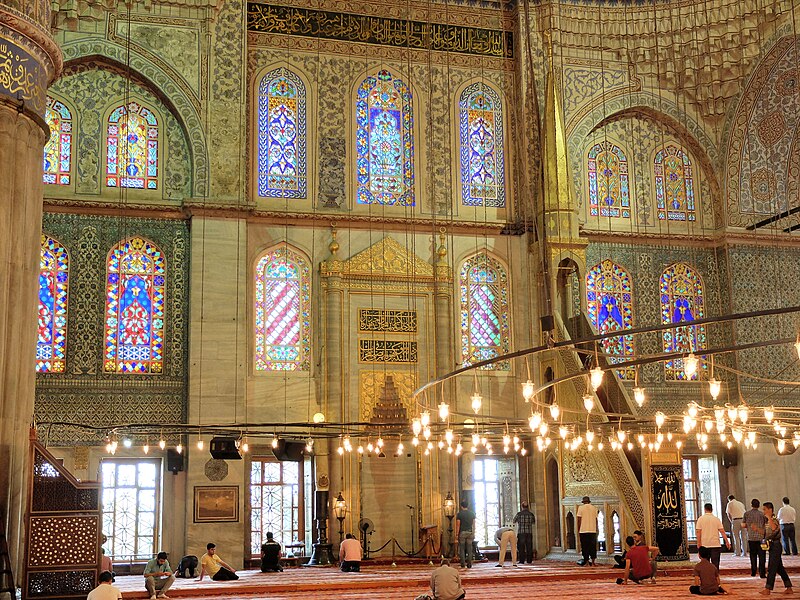
Blue mosque, the mihrab (center) and the minbar (right)
—————– SHAH MOSQUE, SAFAVID ISFAHAN —————————-
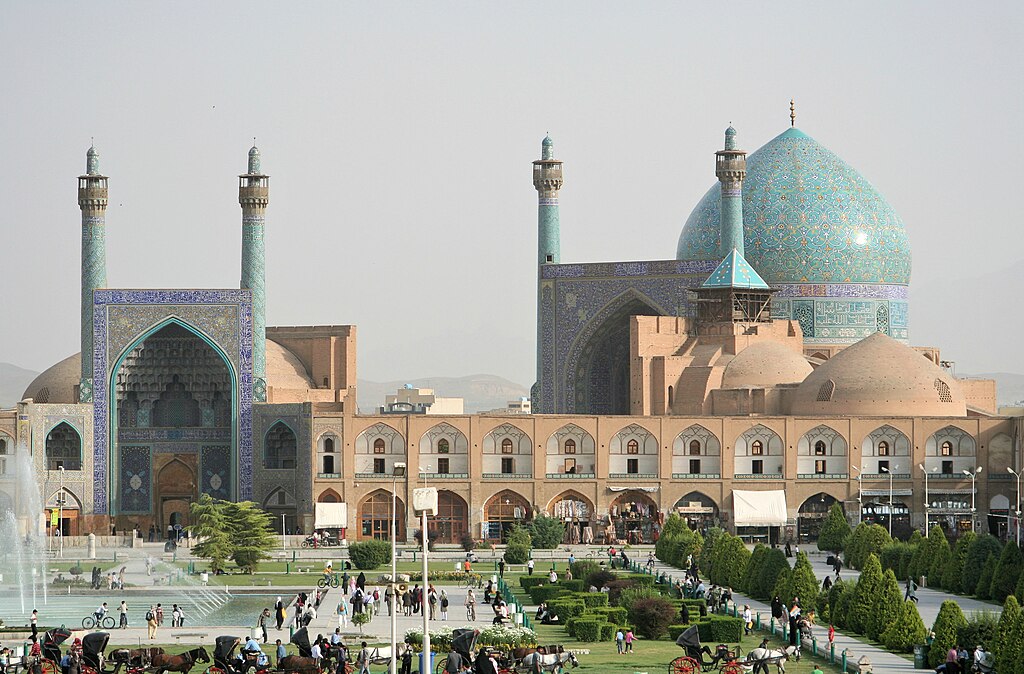
Shah Mosque (Masjid-e Shah): built between 1611 and 1629
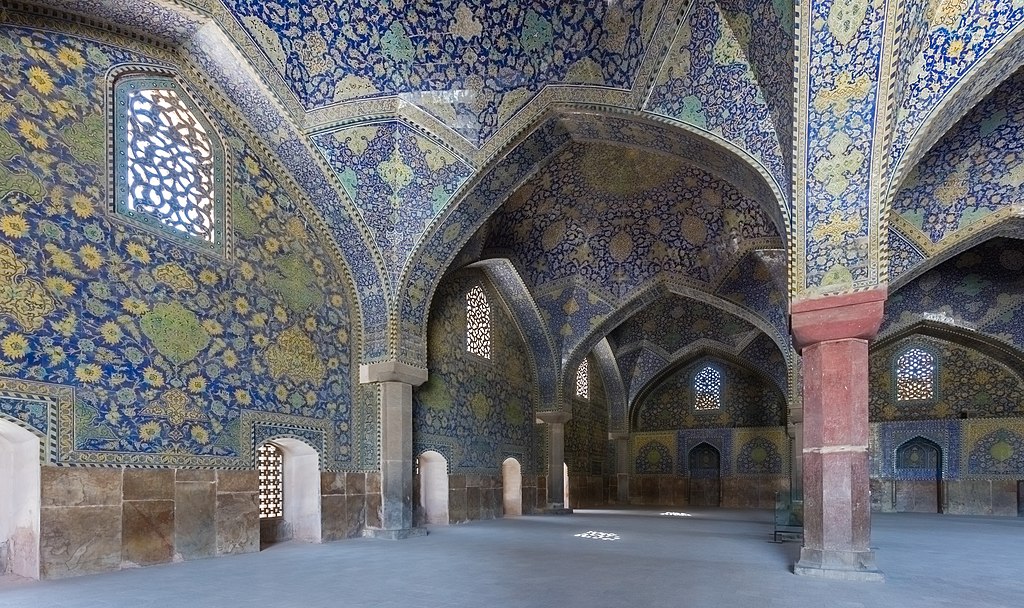
The winter hypostyle
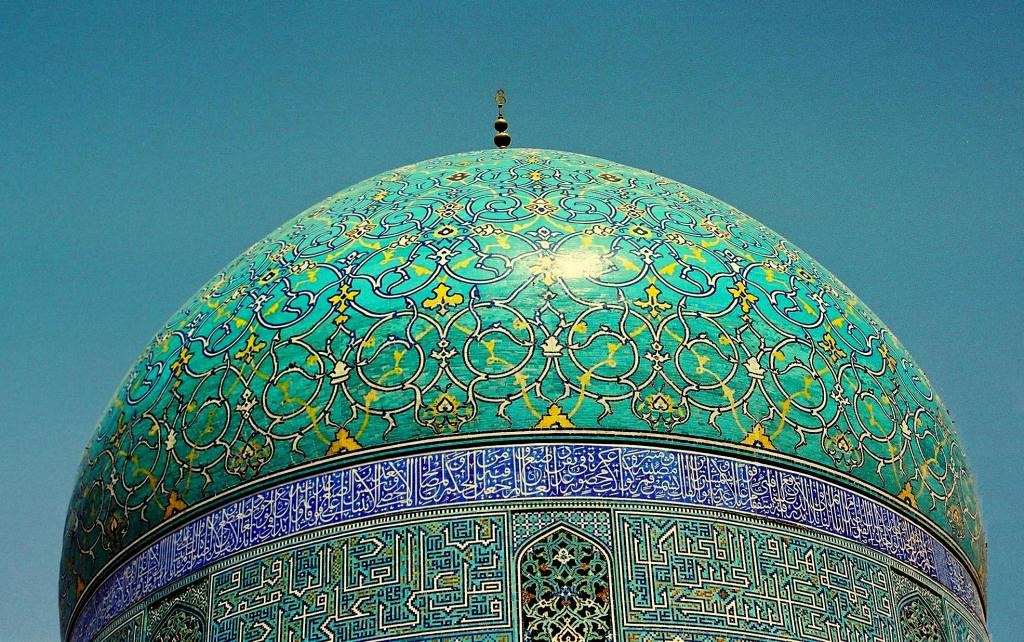
The dome
——————————————————–
FORTHCOMING
Turkey is Iran and Iran is Turkey
2500 Years of indivisible Turanian – Iranian Civilization distorted and estranged by Anglo-French Orientalists
By Prof. Muhammet Şemsettin Gözübüyükoğlu
(Muhammad Shamsaddin Megalommatis)
TABLE OF CONTENTS
PREFACE
CONTENTS
PART ONE. INTRODUCTION
CHAPTER I: A World held Captive by the Colonial Gangsters: France, England, the US, and the Delusional History Taught in their Deceitful Universities
A. Examples of fake national names
a) Mongolia (or Mughal) and Deccan – Not India!
b) Tataria – Not Russia!
c) Romania (with the accent on the penultimate syllable) – Not Greece!
d) Kemet or Masr – Not Egypt!
e) Khazaria – not Israel!
f) Abyssinia – not Ethiopia!
B. Earlier Exchange of Messages in Turkish
C. The Preamble to My Response
CHAPTER II: Geopolitics does not exist.
CHAPTER III: Politics does not exist.
CHAPTER IV: Turkey and Iran beyond politics and geopolitics: Orientalism, conceptualization, contextualization, concealment
A. Orientalism
B. Conceptualization
C. Contextualization
D. Concealment
PART TWO. EXAMPLE OF ACADEMICALLY CONCEALED, KEY HISTORICAL TEXT
CHAPTER V: Plutarch and the diffusion of Ancient Egyptian and Iranian Religions and Cultures in Ancient Greece
PART THREE. TURKEY AND IRAN BEYOND POLITICS AND GEOPOLITICS: REJECTION OF THE ORIENTALIST, TURKOLOGIST AND IRANOLOGIST FALLACIES ABOUT ACHAEMENID HISTORY
CHAPTER VI: The fallacy that Turkic nations were not present in the wider Mesopotamia – Anatolia region in pre-Islamic times
CHAPTER VII: The fallacious representation of Achaemenid Iran by Western Orientalists
CHAPTER VIII: The premeditated disconnection of Atropatene / Adhurbadagan from the History of Azerbaijan
CHAPTER IX: Iranian and Turanian nations in Achaemenid Iran
CHAPTER X: Iranian and Turanian Religions in Pre-Islamic Iran
PART FOUR. FALLACIES ABOUT THE SO-CALLED HELLENISTIC PERIOD, ALEXANDER THE GREAT, AND THE SELEUCID & THE PARTHIAN ARSACID TIMES
CHAPTER XI: Alexander the Great as Iranian King of Kings, the fallacy of Hellenism, and the nonexistent Hellenistic Period
CHAPTER XII: Parthian Turan: an Anti-Persian dynasty
CHAPTER XIII: Parthian Turan and the Philhellenism of the Arsacids
PART FIVE. FALLACIES ABOUT SASSANID HISTORY, HISTORY OF RELIGIONS, AND THE HISTORY OF MIGRATIONS
CHAPTER XIV: Arsacid & Sassanid Iran, and the wars against the Mithraic – Christian Roman Empire
CHAPTER XV: Sassanid Iran – Turan, Kartir, Roman Empire, Christianity, Mani and Manichaeism
CHAPTER XVI: Iran – Turan, Manichaeism & Islam during the Migration Period and the Early Caliphates
PART SIX. FALLACIES ABOUT THE EARLY EXPANSION OF ISLAM: THE FAKE ARABIZATION OF ISLAM
CHAPTER XVII: Iran – Turan and the Western, Orientalist distortions about the successful, early expansion of Islam during the 7th – 8th c. CE
CHAPTER XVIII: Western Orientalist falsifications of Islamic History: Identification of Islam with only Hejaz at the times of the Prophet
CHAPTER XIX: The fake, Orientalist Arabization of Islam
CHAPTER XX: The systematic dissociation of Islam from the Ancient Oriental History
PART SEVEN. THE FICTIONAL DIVISION OF ISLAM INTO ‘SUNNI’ AND ‘SHIA’
CHAPTER XXI: The fabrication of the fake divide ‘Sunni Islam vs. Shia Islam’
PART EIGHT. THE DISTORTED TERM ‘PERSIANATE’
CHAPTER XXII: The fake Persianization of the Abbasid Caliphate
PART NINE. FALLACIES ABOUT THE GOLDEN ERA OF THE ISLAMIC CIVILIZATION
CHAPTER XXIII: From Ferdowsi to the Seljuk Turks, Nizam al Mulk, Nizami Ganjavi, Jalal ad-Din Rumi and Haji Bektash
PART TEN. FALLACIES ABOUT THE TIMES OF TURANIAN (MONGOLIAN) SUPREMACY IN TERMS OF SCIENCES, ARTS, LETTERS, SPIRITUALITY AND IMPERIAL UNIVERSALISM
CHAPTER XXIV: From Genghis Khan, Nasir al-Din al Tusi and Hulagu to Timur
CHAPTER XXV: Timur (Tamerlane) as a Turanian Muslim descendant of the Great Hero Manuchehr, his exploits and triumphs, and the slow rise of the Turanian Safavid Order
CHAPTER XXVI: the Timurid Era as Peak of the Islamic Civilization, Shah Rukh, and Ulugh Beg, the Astronomer Emperor
PART ELEVEN. HOW AND WHY THE OTTOMANS, THE SAFAVIDS AND THE MUGHALS FAILED
CHAPTER XXVII: Ethnically Turanian Safavids & Culturally Iranian Ottomans: two identical empires that mirrored one another
CHAPTER XXVIII: Spirituality, Religion & Theology: the fallacy of the Safavid conversion of Iran to ‘Shia Islam’
CHAPTER XXIX: Selim I, Ismail I, and Babur
CHAPTER XXX: The Battle of Chaldiran (1514), and how it predestined the Fall of the Islamic World
CHAPTER XXXI: Ottomans, Safavids and Mughals: victims of their sectarianism, tribalism, theology, and wrong evaluation of the colonial West
CHAPTER XXXII: Ottomans, Iranians and Mughals from Nader Shah to Kemal Ataturk
PART TWELVE. CONCLUSION
CHAPTER XXXIII: Turkey and Iran beyond politics and geopolitics: whereto?
—————————————————
List of the already pre-published chapters of the book
Lines separate chapters that belong to different parts of the book.
CHAPTER X: Iranian and Turanian Religions in Pre-Islamic Iran
https://www.academia.edu/105664696/Iranian_and_Turanian_Religions_in_Pre_Islamic_Iran
—————————-
CHAPTER XI: Alexander the Great as Iranian King of Kings, the fallacy of Hellenism, and the nonexistent Hellenistic Period
CHAPTER XII: Parthian Turan: an Anti-Persian dynasty
https://www.academia.edu/52541355/Parthian_Turan_an_Anti_Persian_dynasty
CHAPTER XIII: Parthian Turan and the Philhellenism of the Arsacids
https://www.academia.edu/105539884/Parthian_Turan_and_the_Philhellenism_of_the_Arsacids
———————————
CHAPTER XIV: Arsacid & Sassanid Iran, and the wars against the Mithraic – Christian Roman Empire
CHAPTER XV: Sassanid Iran – Turan, Kartir, Roman Empire, Christianity, Mani and Manichaeism
CHAPTER XVI: Iran – Turan, Manichaeism & Islam during the Migration Period and the Early Caliphates
———————————-
CHAPTER XVII: Iran–Turan and the Western, Orientalist distortions about the successful, early expansion of Islam during the 7th-8th c. CE
CHAPTER XIX: The fake, Orientalist Arabization of Islam
https://www.academia.edu/105713891/The_fake_Orientalist_Arabization_of_Islam
CHAPTER XX: The systematic dissociation of Islam from the Ancient Oriental History
—————————————
CHAPTER XXI: The fabrication of the fake divide ‘Sunni Islam vs. Shia Islam’
https://www.academia.edu/55139916/The_Fabrication_of_the_Fake_Divide_Sunni_Islam_vs_Shia_Islam_
——————————————
CHAPTER XXII: The fake Persianization of the Abbasid Caliphate
https://www.academia.edu/61193026/The_Fake_Persianization_of_the_Abbasid_Caliphate
——————————————–
CHAPTER XXIII: From Ferdowsi to the Seljuk Turks, Nizam al Mulk, Nizami Ganjavi, Jalal ad-Din Rumi and Haji Bektash
————————————————
CHAPTER XXIV: From Genghis Khan, Nasir al-Din al Tusi and Hulagu to Timur
CHAPTER XXV: Timur (Tamerlane) as a Turanian Muslim descendant of the Great Hero Manuchehr, his exploits and triumphs, and the slow rise of the Turanian Safavid Order
CHAPTER XXVI: The Timurid Era as the Peak of the Islamic Civilization: Shah Rukh, and Ulugh Beg, the Astronomer Emperor
—————————————————————-
Download the chapter (text only) in PDF:
Download the chapter (pictures & legends) in PDF:





























































